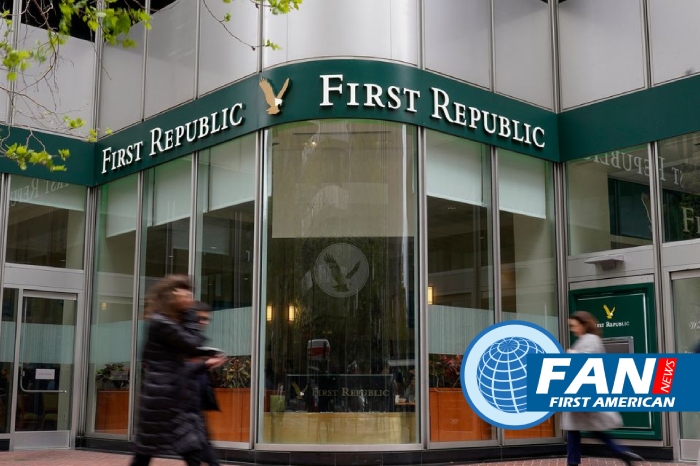Economy
Banks Face Crisis of Investor Confidence Amid Market Volatility
Banks Face Crisis – The seizure and sale of First Republic Bank to JPMorgan Chase were expected to be a moment of release for American banks, marking the end of the latest financial system’s crisis of confidence.
The brief respite was short-lived. Regional banks’ shares plummeted on Tuesday, with some of them declining by more than 10%. By Thursday, the KBW Nasdaq Regional Banking Index had fallen by 15% compared to the previous week, but it recovered on Friday, ending the week down by 8%.
Why is this significant? The fact is that shareholders are not the same as depositors. A drop in a bank’s stock value does not have an immediate impact on its capacity to meet its obligations as they arise. PacWest and Western Alliance, two regional banks that ended a turbulent week with a 43% and 27% drop, respectively, have reported no abnormal deposit movements following the fire sale of First Republic.
According to economist Benjamin Graham, markets can be a weighing machine in the long term, reflecting reality. However, in the short term, they may function as a voting machine, indicating what investors believe will occur. At the moment, some investors are expressing doubt about regional banks.
The situation with First Republic illustrates how banks can be exceptionally susceptible to a lack of investor confidence. The banking regulator in California cited the steep decline in First Republic’s stock price as one of the reasons for its decision to seize the bank, claiming that it had been unable to rebuild “market trust” in its operating strategy.
Read Banks Face Crisis and other news at WSJ Digital Subscription
The occurrence was unexpected. Following the 2008 financial crisis, policymakers and regulators implemented various measures to make banks less susceptible to market fluctuations and safer. Banks typically engage in less risky trading activities and lending practices than they used to. Additionally, they usually maintain more capital than is necessary, as per regulatory requirements. According to the Federal Reserve, over 99% of community banks and all regional banks with assets up to $100 billion had capital-to-asset ratios exceeding the required levels, as of mid-2022.
The stability of the banking system was not a concern until March 8, when Silicon Valley Bank’s announcement of a loss highlighted its unstable financial situation.
However, the issue that has caused this crisis, which is the rising interest rates in banks’ portfolios, is not a lasting one. The bonds and loans held by banks currently yield less than the market rates, which have decreased in value but will eventually mature or pay off. This will provide banks with new funds to invest or lend at much higher rates. According to Jefferies analysts, the banks they cover anticipate a paper loss reduction of around 20% to 50% in their securities portfolios by the close of 2024.
The current assumption is that the Federal Reserve won’t alter its tightening policy. However, if it were to pause rates for a considerable period or reduce them, it could significantly enhance the value of banks’ portfolios. Therefore, taking no action may be a practical approach.
Get 2 Years of The Wall Street Journal Print Subscription with daily delivery for $480
However, this hopeful perspective fails to consider the vulnerability of deposits. Even if a bank has a long-standing reputation like Silicon Valley Bank or First Republic, it could face a sudden surge of withdrawals from accounts that are not covered by deposit insurance, making it evident that a bank can become unstable rapidly. In reality, selling securities or loans at lower prices turn theoretical losses into actual ones, which can quickly erode a bank’s capital and necessitate regulatory intervention.
This is why the current type of banking crisis, where there is a vicious cycle of withdrawals and panic selling, can be extremely difficult to resolve. Unfortunately, this has already affected three banks.
Investors have valid concerns when it comes to banks, including competition from money-market funds, which are also vying for cash and seeking to offer high-interest rates to customers. As a result, customers are enticed to take these offers, and banks must offer comparable pricing to prevent the risk of losing depositors who are sensitive to interest rates.
Smaller financial institutions are grappling with the notion that their larger counterparts are more reliable. Following the 2008 financial crisis, regulators focused mainly on the danger of failures of big banks due to their global interconnectivity. The regulations worked, making them safer and more attractive to depositors. Consequently, other banks appear to be weaker. Vanderbilt Law School professor Morgan Ricks compiled figures that revealed that of the almost $8 trillion in uninsured U.S. deposits at the end of last year, nearly two-thirds were held by seven banks with over $500 billion in assets.
Subscribe today and get 52 weeks of The WSJ Print Edition for $318
The market instability may also be influenced by a possible change in capital regulations for regional banks. According to The Wall Street Journal, banks with assets under $100 billion may soon have to account for paper losses on particular investments in their regulatory capital levels, similar to the largest banks. Although these modifications could take a long time to implement, analysts may already be factoring in the banks’ capital levels and anticipating future capital raises that could dilute current shareholders and decrease future profits.
Despite not having extra capital, banks could still face this crisis with limited financial flexibility and lower earnings. Their delicate financial state makes them prone to rapid changes in customer sentiment or the market. Increasing the deposit insurance limit beyond $250,000 might alleviate investor concerns, but it would require a divided Congress to take action.
This crisis is challenging to address because of various reasons. Some investors believe that smaller banks require additional capital, but it may be difficult to achieve due to the decline in share prices. If investors demand only the most secure banks, then the confidence crisis in banks will persist.

